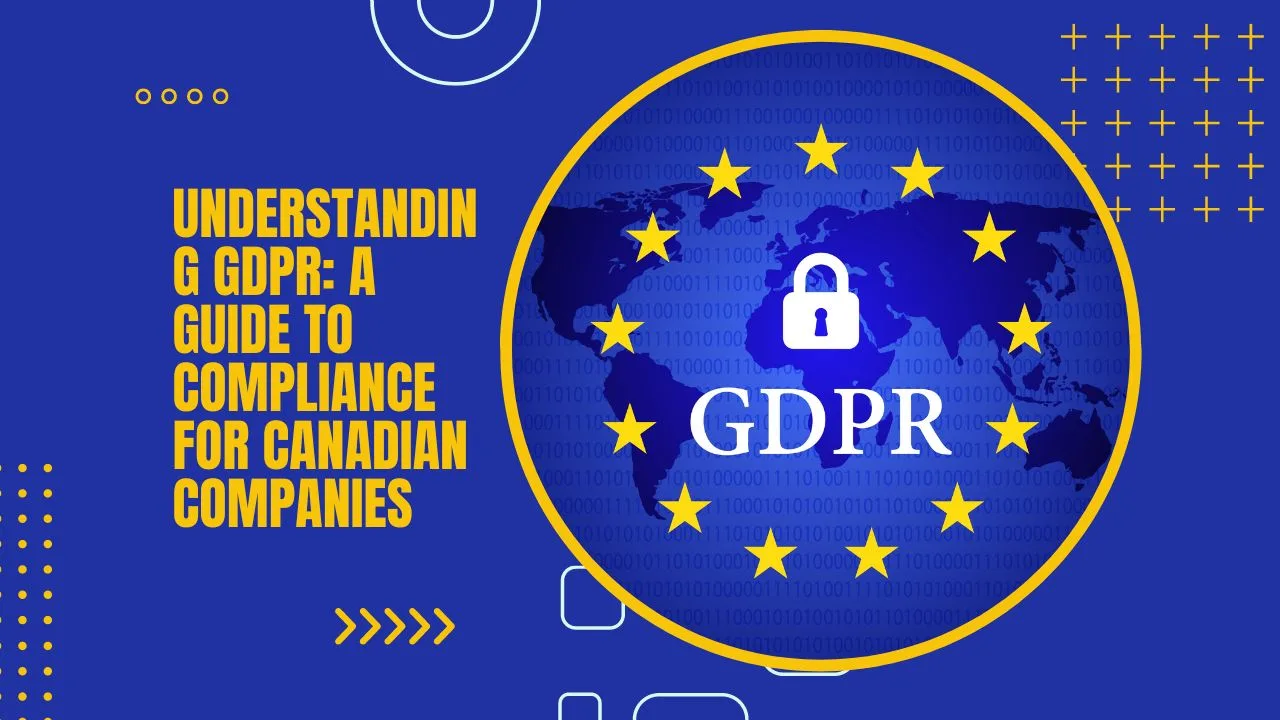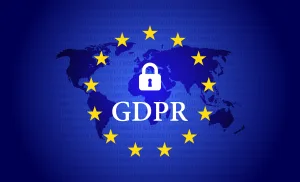Understanding GDPR: A Guide to Compliance For Canadian Companies

Welcome, Canadian companies! Get ready to decode the baffling world of GDPR and unlock your pathway to compliance. In this guide, we will demystify the European Union’s General Data Protection Regulation (GDPR), breaking it down into bite-sized pieces tailored specifically for you. Whether you’re a small startup or an established enterprise, understanding and complying with GDPR is crucial in today’s interconnected digital landscape. So let’s dive deep into this ever-evolving privacy framework and equip ourselves with the knowledge needed to protect our customers’ data while ensuring seamless business operations. Lend us your attention as we embark on an enlightening journey toward GDPR compliance!
INTRODUCTION TO GDPR
The General Data Protection Regulation (GDPR) is the toughest privacy and security law in the world. Though it was drafted and passed by the European Union (EU), it imposes obligations onto organizations anywhere, so long as they target or collect data related to people in the EU. The regulation was put into effect on May 25, 2018. The GDPR will levy harsh fines against those who violate its privacy and security standards, with penalties reaching into the tens of millions of euros.
The regulation sets out strict rules about how personal data must be collected, used, and protected. Companies that process or store the data of individuals in the EU must comply with these rules, regardless of whether they are based inside or outside the EU.
Under GDPR, personal data is defined as any information that can be used to identify an individual, including names, addresses, email addresses, and IP addresses. Sensitive personal data, which includes information about race, religion, and health, is given special protection under GDPR.
Data controllers are responsible for ensuring that personal data is collected and used in accordance with GDPR. Data processors are companies that process personal data on behalf of data controllers. Data processors must have written contracts with data controllers that set out their obligations under GDPR.
GDPR requires companies to get explicit consent from individuals before collecting, using, or sharing their personal data. Companies must also provide individuals with clear and concise information about their rights under GDPR and how to exercise them.
Individuals have the right to access their personal data, request corrections or deletions, and object to the processing of their data. They can also request that their personal data be transferred to another organization. Companies must respond to requests within one month.
Organizations must also put in place appropriate technical and organizational measures to protect personal data from unauthorized access, loss, destruction, or alteration. This includes regular security audits and vulnerability scans.
The GDPR is an important step forward in protecting individuals’ privacy rights. Organizations must ensure that they comply with the regulation or face stiff penalties for non-compliance.
WHAT DOES GDPR MEAN FOR COMPANIES IN CANADA?
The General Data Protection Regulation (GDPR) is a set of regulations that member states of the European Union implement in order to protect the privacy of digital data. The regulation is also known as the EU Data Protection Regulation, Reg. No. 765/2016. It replaces the Data Protection Directive (95/46/EC).
The GDPR sets out strict rules about how personal data must be collected, used, and protected. It gives individuals the right to know what personal data is being collected about them, the right to have that data erased, and the right to object to its use.
The regulation applies to any company that processes or intends to process the personal data of individuals in the EU, regardless of whether the company is based inside or outside the EU. This means that Canadian companies that do business with Europeans or process European citizens’ data must comply with GDPR unless they can demonstrate that they meet certain conditions.
Compliance with GDPR may seem daunting, but it is possible for Canadian companies to meet all of the requirements. Here are some key things to keep in mind:
– Collect only the personal data that you need for a specific purpose and get explicit consent from individuals before collecting, using, or sharing their data.
– Keep records of the consent you have received from individuals and be able to show how you use their personal data.
– Allow individuals to access, update, or delete their personal data.
– Keep personal data secure and take appropriate measures to protect it from unauthorized access or loss.
– Provide a privacy notice to individuals that outlines how you collect, use, store, and share their personal data.
By following these steps, Canadian companies can ensure that they are in compliance with GDPR and can avoid any potential fines or other penalties imposed by the European Union for failure to comply.
KEY REQUIREMENTS OF THE GENERAL DATA PROTECTION REGULATION
The General Data Protection Regulation (GDPR) is a comprehensive data protection law that came into effect in May 2018. It was designed to harmonize data protection regulations within the European Union (EU) and provide individuals with greater control over their personal data. The GDPR sets out several key requirements that organizations must comply with when processing personal data. Here are some of the fundamental requirements of the GDPR:
Lawful Basis for Processing: Organizations must have a valid lawful basis for processing personal data. This includes obtaining explicit consent from the data subjects, fulfilling a contractual obligation, complying with a legal obligation, protecting vital interests, performing a task carried out in the public interest, or pursuing legitimate interests (unless overridden by the interests or fundamental rights of the data subjects).
Data Minimization and Purpose Limitation: Organizations should only collect and process personal data that is necessary for specific and legitimate purposes. They must ensure that the data is adequate, relevant, and limited to what is necessary for those purposes. Personal data should not be retained for longer than necessary.
Data Subject Rights: The GDPR grants individuals various rights regarding their personal data. These include the right to access their data, rectify inaccuracies, erase data (“right to be forgotten”), restrict processing, data portability, object to processing, and not be subject to automated decision-making.
Consent and Withdrawal: If an organization relies on consent as the lawful basis for processing personal data, it must be freely given, specific, informed, and unambiguous. Data subjects should have the right to withdraw their consent at any time.
Data Security and Accountability: Organizations must implement appropriate technical and organizational measures to ensure the security of personal data. This includes protecting against unauthorized access, accidental loss, destruction, or damage. They should also maintain records of processing activities, conduct data protection impact assessments (DPIAs) for high-risk processing, and appoint a data protection officer (DPO) in certain cases.
Data Transfers: When transferring personal data outside the EU or the European Economic Area (EEA), organizations must ensure that the receiving country provides an adequate level of data protection. In the absence of an adequacy decision, appropriate safeguards such as standard contractual clauses, binding corporate rules, or approved codes of conduct must be implemented.
Data Breach Notification: In the event of a personal data breach that is likely to result in a risk to the rights and freedoms of individuals, organizations must notify the relevant supervisory authority without undue delay. In some cases, they may also be required to notify affected individuals.
Privacy by Design and Default: Privacy considerations should be integrated into the design of systems, processes, and services from the outset. Organizations should implement measures to minimize the processing of personal data, protect it by default, and only collect the necessary information for the intended purpose.
Accountability and Compliance: Organizations are responsible for demonstrating compliance with the GDPR. This involves maintaining documentation of data processing activities, conducting regular audits, providing individuals with transparent information about data processing, and cooperating with supervisory authorities.
PRACTICAL STEPS FOR COMPLIANCE WITH GENERAL DATA PROTECTION REGULATION
1. Understand the GDPR requirements: The first step to compliance is understanding what the GDPR requires of Canadian companies. This includes understanding the data processing activities that are subject to GDPR, the rights of individuals under GDPR, and the obligations of organizations under GDPR.
2. Assess your organization’s compliance risks: Once you understand the GDPR requirements, you need to assess your organization’s specific compliance risks. This will help you determine which areas of your business need to be addressed in order to comply with GDPR.
3. Develop a compliance plan: Based on your risk assessment, you should develop a comprehensive compliance plan that outlines how your organization will address its GDPR obligations. Your plan should include specific actions and timelines for each area of your business that needs to be addressed.
4. Implement your compliance plan: Once you have developed your compliance plan, it’s time to put it into action. This includes implementing policies and procedures, training employees on GDPR requirements, and putting systems in place to ensure ongoing compliance.
5. Monitor and review your compliance: You need to monitor and review your organization’s compliance with GDPR on an ongoing basis. This includes regularly assessing your risks, updating your policies and procedures as needed, and investigating any incidents or complaints related to GDPR.
6. Security Measures: Implement appropriate technical and organizational security measures to protect personal data from unauthorized access, loss, or alteration. This includes encryption, access controls, regular system updates, staff awareness training, and strong password policies. Conduct regular security assessments and audits to identify and address vulnerabilities.
7. Staff Training and Awareness: Educate and train your employees on the principles and requirements of the GDPR. This includes raising awareness about data protection best practices, recognizing and reporting potential data breaches, and understanding their roles and responsibilities in ensuring GDPR compliance.
ADDITIONAL RESOURCES FOR UNDERSTANDING AND IMPLEMENTING THE GDPR
The GDPR is a complex regulation, and there are a number of resources available to help companies understand and comply with its requirements.
The European Union has published a number of helpful resources, including an FAQ on the GDPR, guidance on specific topics such as data protection impact assessments, and a toolkit for small and medium-sized businesses.
There are also a number of good books and articles that provide an overview of the GDPR and offer practical advice on compliance. The IAPP’s “GDPR resource center” is a good starting point for finding these resources. The law firm Hunton & Williams LLP has published a helpful “GDPR compliance checklist” that companies can use to assess their readiness for the GDPR.
CONCLUSION
Following GDPR regulations is essential for Canadian businesses that deal with European customers. Understanding the various requirements of this regulation can help companies ensure they remain compliant and avoid potential penalties. By taking proactive steps to understand, implement, and monitor compliance with GDPR, organizations can protect their customer data and maintain a secure environment for their operations. With careful planning and a commitment to staying up-to-date on any changes in the law, companies can reap the rewards of having a secure system while helping keep their customers safe from cyber threats.

Comments
Post a Comment